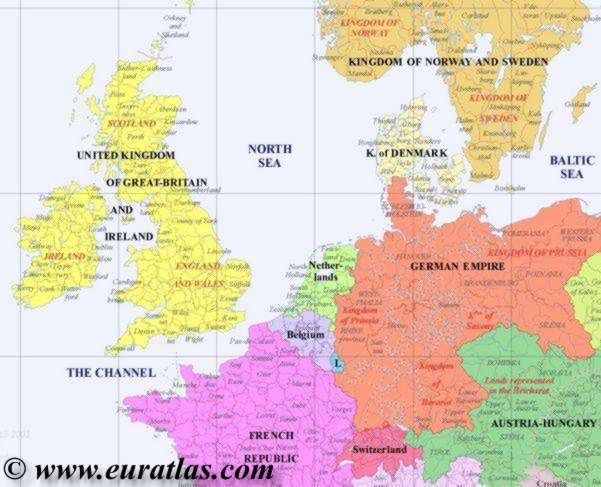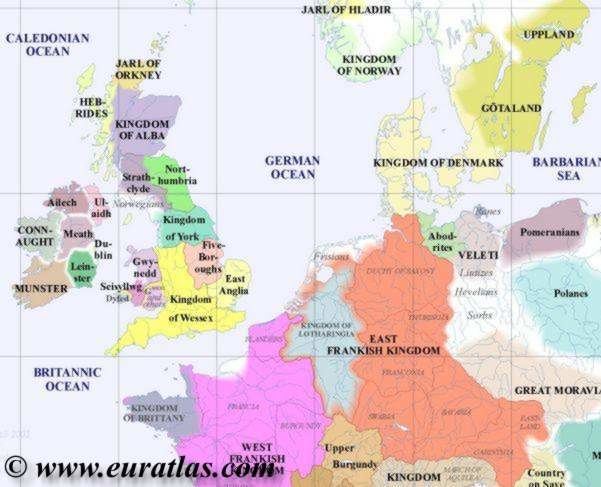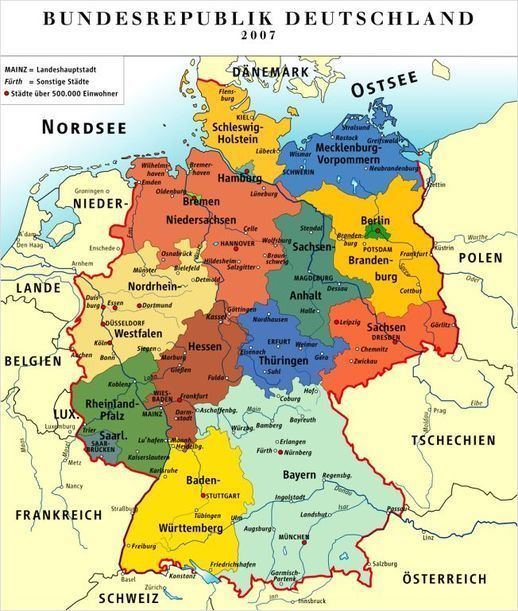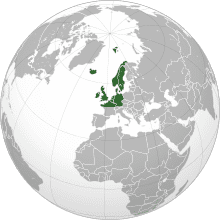 | ||
Northwestern europe
Northwestern Europe, or Northwest Europe, is the loosely defined northwestern region of Europe. The phrase is defined both geographically and ethnographically.
Contents
- Northwestern europe
- Late winter snowstorm batters northwestern europe
- Geographic definitions
- Ethnographic definitions
- World War II Theatre
- References

Late winter snowstorm batters northwestern europe
Geographic definitions

Geographically, Northwestern Europe usually consists of Ireland, the United Kingdom, Belgium, the Netherlands, northern Germany, Denmark, Norway, Sweden, and Iceland. Luxembourg, northern France, southern Germany, and Switzerland are also often considered part of the grouping. Austria is also sometimes defined as Northwestern Europe, though less frequently. Southern France is not regarded as northwestern, and it is usually geographically and culturally considered part of the Mediterranean region or Southern Europe. Due to its geographically eastern position and unique status as a Finnic language country, Finland is sometimes geographically and culturally excluded from Northwestern Europe. Similarly, the Baltic countries of Estonia, Latvia, and Lithuania, although considered part of Northern Europe, are excluded due to their geographically eastern positions and connections to the rest of Eastern Europe. The term is helpful when discussing issues of climate or biology.
Ethnographic definitions

Germanic languages are widely spoken in most of Northwestern Europe, although other languages are also present, including Romance languages in northern France, Belgium and Luxembourg, and Celtic languages along the western fringes of the British Isles and in Brittany. The region also has a history of Protestantism that differentiates it from its Mediterranean / Southern European / Latin and Eastern European / Slavic neighbors. The definition of Northwestern Europe as correlating with Protestant Germanic Europe leads to much the same definition as the geographical one above, but would tend to exclude northern France, Wallonia, Catholic Belgium, southern Germany, Austria, and Ireland. This is because France and Wallonia, despite their historical Huguenot populations, are considered Catholic Romance language countries, while Belgium, southern Germany, Austria, and Ireland, though largely containing Germanic language speakers, are historically Catholic. Measured by the attribute of Protestantism and Germanic culture, Northwestern Europe would therefore be equivalent to the area known as Northern Europe combined with the Low Countries, much of Switzerland, and northern Germany, and minus the Baltic regions, Belgium, and Ireland.

A definition of Northwestern Europe as an inclusive term for those European countries not falling within Southern Europe or Eastern Europe was used by some late 19th to mid 20th century anthropologists and eugenicists, who used Northwestern Europe as a shorthand term for the region of Europe in which members of the Nordic race were concentrated, in contrast to the Eastern and Southern regions of Europe that contained Mediterranean peoples, Slavs, and other non-Nordic peoples. Under this racialist view, all of the Germanic countries and areas such as northern France, which historically contains large numbers of people of Celtic and Germanic Frankish descent, would be included as Northwestern Europe, due in part to the predominance of phenotypically Nordic people within these areas.
World War II Theatre

In military history, especially in Commonwealth countries, the battle honour North-West Europe has been used to refer to the two land campaigns in that approximate area during World War II. Two separate battle honours were awarded to regiments who took part in these campaigns. The North-West Europe Campaign of 1940, during the Battle of France, was restricted to Belgium and the French Channel ports. The North-West Europe Campaign of 1944–1945 started with the landings in Normandy and ended with Field Marshal Montgomery taking the German military surrender of all German forces in the Netherlands, north-west Germany and Denmark on Lüneburg Heath in north-west Germany was fought by the British 21st Army Group. In the First campaign the French Army was responsible for the rest of the Western Front from Luxembourg to Switzerland, as were the American 12th Army and 6th Army Groups during the second campaign.

Units of the First Canadian Army fought in five major campaigns in North-West Europe, including the Battle of Normandy, the battles for the Channel Ports, the Battle of the Scheldt, the Rhineland fighting in February and March 1945, and the final operations east of the River Rhine. A period of static warfare existed from 1 November 1944 to 8 February 1945 during which time the First Canadian Army manned positions in the Nijmegen Salient.
